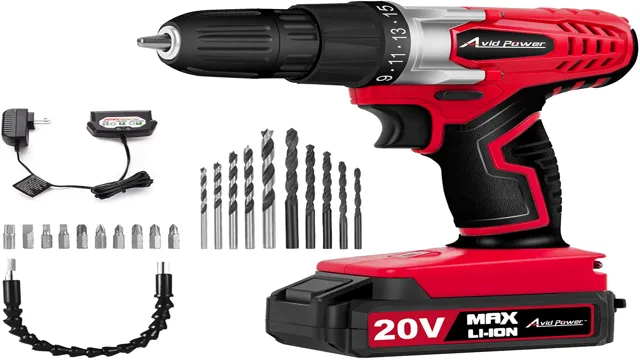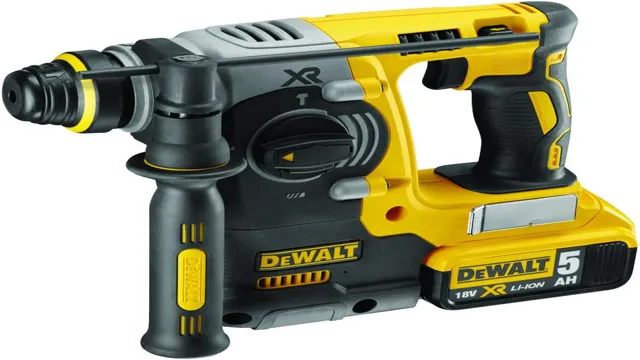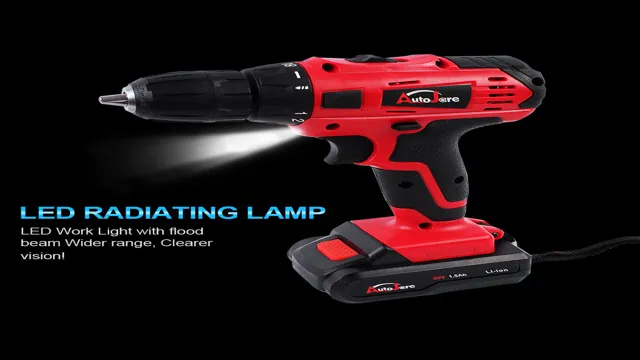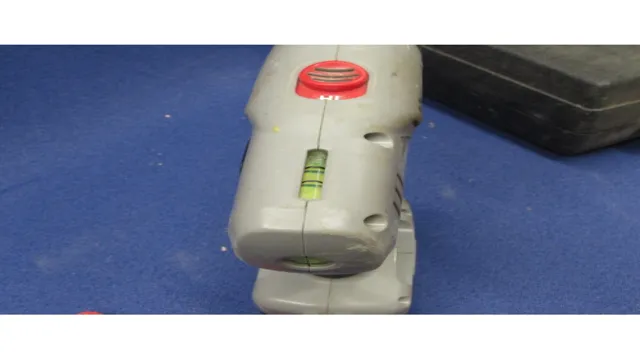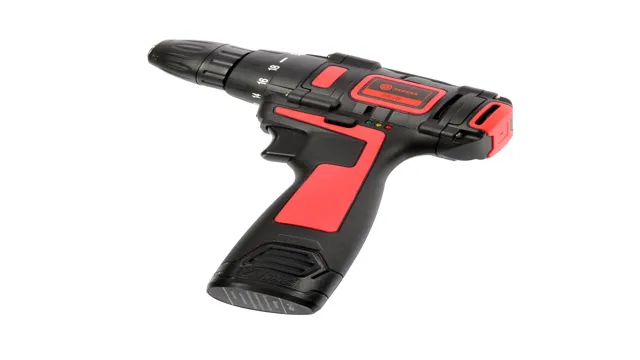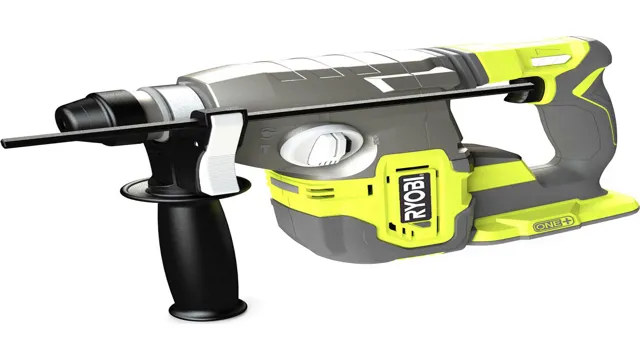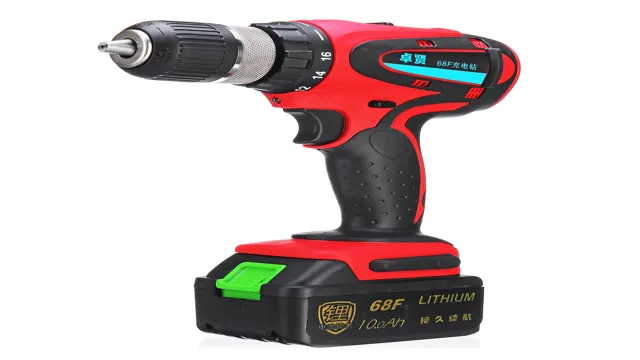Don’t Use Cordless Drill as Hammer: Avoiding Common DIY Mistakes.

If you own a cordless drill, you know how versatile it can be. From woodworking to metalworking to drilling through concrete, this tool can do it all. But have you ever considered using your cordless drill as a hammer? While it may seem like a convenient shortcut, this is a dangerous and potentially deadly mistake.
In this blog post, we’ll explore the many dangers of using a cordless drill as a hammer, and give you some tips on how to use your tool safely and effectively. So put down that drill and read on!
Why You Shouldn’t Use a Cordless Drill as a Hammer
Have you ever been tempted to use your cordless drill as a hammer? Maybe you need to hang a picture and don’t want to bother getting a proper hammer. Or perhaps you’re feeling lazy and don’t want to switch tools. Whatever the reason, I urge you not to do it.
Using a cordless drill as a hammer is a bad idea for several reasons. First of all, it’s not designed for that purpose. The mechanism inside a drill is not meant to handle the force of hammering, which can damage the gears and other components.
Additionally, a drill doesn’t have the same weight or balance as a hammer, which means it’s harder to control and could lead to accidents. Finally, the drill bit itself could shatter under the stress of hammering, which could cause serious injury. So, while it may be tempting to take a shortcut, it’s not worth the risk.
Stick to using the proper tools for each job, and you’ll save yourself a lot of headaches in the long run.
Risk of Injury
Using a cordless drill as a hammer may seem like a quick solution to drive a nail or make a hole, saving time swapping tools. However, the risk of injury is too great to justify this shortcut. While a cordless drill and a hammer may look similar at first glance, they are entirely different tools designed for different purposes.
A cordless drill is designed to Twists and rotates screws and bits while a hammer exerts a powerful force and delivers an impact to secure a nail into wood or concrete. If you try to use a cordless drill as a hammer, it may not only damage the drill but can break the surface or cause the drill to spin out of control, leading to severe injuries. It’s essential to use the right tool for the job, and in this case, it’s best to invest in a hammer rather than risking injury by using a cordless drill.
Keep yourself safe and use the right tool!
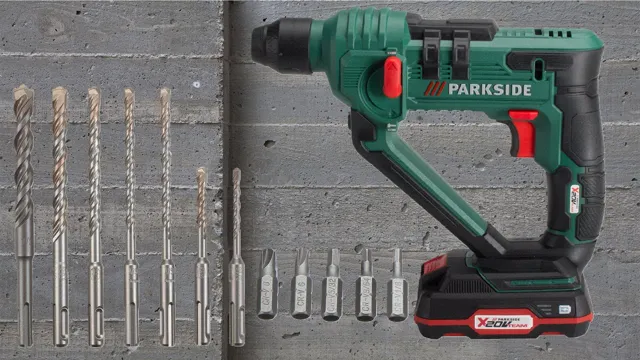
Damage to the Drill
If you’re thinking about using your cordless drill as a hammer, think again. Not only is it a risky move, but it can also cause serious damage to your drill. Drills are designed to spin and generate torque, not pound and apply force.
Using your drill as a hammer can put unnecessary strain on its motor and other internal components, leading to future malfunctions and even complete failure. Plus, mounting a hammer drill bit onto your cordless drill can compromise its balance and stability, making it much more difficult to control and use safely. So, if you want to keep your drill in good working order and save yourself from potential injuries, always use the right tool for the job.
Don’t risk damaging your cordless drill and invest in a quality hammer for all your pounding needs instead.
Increased Maintenance Costs
Cordless drills are undoubtedly a handy tool to have in your toolkit. However, it’s crucial to remember that they are not intended to function as hammers. Attempting to use a cordless drill in such a way can lead to increased maintenance costs in the long run.
The drill motor and battery can get damaged or worn out, resulting in expensive repairs or replacements. Additionally, using a cordless drill as a hammer can also lead to injuries, both to you and to the object you’re trying to hammer. It’s always best to utilize the appropriate tool for the job to prevent unnecessary expenses and ensure your safety.
Therefore, it’s essential to understand the limitations and capabilities of your cordless drill and use it accordingly instead of improvising as a hammer. By doing so, you can avoid damage, extend the lifespan of your equipment, and save money in the long run.
You May Also Love:
Alternatives to Using a Cordless Drill as a Hammer
Using a cordless drill as a hammer may seem like a quick fix, but it’s not recommended. Doing so can cause damage to both the drill and the item you’re trying to hammer. Fortunately, there are alternative tools that can get the job done.
A hammer is the obvious choice, but there are also mallets, rubber hammers, and even specialty hammers for tasks like upholstery work. If you’re worried about damaging the surface you’re hammering on, a rubber hammer or specialty hammer with a softer surface is a great option. These tools provide the necessary force without the risk of damage.
So, next time you’re tempted to use your cordless drill as a hammer, opt for one of these alternatives instead.
Use Proper Tools for the Job
Using a cordless drill as a hammer is not only ineffective but also dangerous. Instead of trying to force your drill to do a job it’s not meant to do, invest in proper tools for the task at hand. For example, a hammer is designed to deliver force in a way that a drill cannot replicate.
It has a large striking surface that helps distribute the force evenly, making it safer and more efficient. Alternatively, if you need to drill a hole, using a hammer drill specifically designed for that purpose will provide the accuracy and power you need. Don’t risk damaging your cordless drill or injuring yourself by using it incorrectly.
Choose the right tool for the job and work smarter, not harder.
Invest in a Hammer Drill
If you’re planning on tackling construction work that requires drilling into masonry, then you’ll want to consider investing in a hammer drill. While cordless drills can work as hammers for occasional use, a hammer drill is better suited for this type of job. A hammer drill uses a striking motion to help break through concrete or brick walls.
It also has an adjustable speed setting that enables it to work on different material strengths. It’s important to note that hammer drills come in both corded and cordless versions. If you need the freedom of movement that comes with a cordless tool, then you should look for one with a higher voltage or use a second battery when working on larger jobs.
When compared to a cordless drill, a hammer drill is a more powerful and efficient tool, making it a worthwhile investment for anyone working with masonry.
Consider Impact Drivers
If you’re looking for an alternative to using a cordless drill as a hammer, consider investing in an impact driver. Whereas a cordless drill applies a consistent amount of force, an impact driver delivers bursts of energy, making it ideal for driving screws into tough materials like hardwood or metal. Impact drivers also come equipped with hex-shaped collets instead of the traditional chuck found on drills, allowing for quick and easy bit changes.
Additionally, many impact drivers have multiple speed and torque settings, giving you greater control over the amount of force you apply. Whether you’re a professional contractor or a DIY enthusiast, an impact driver is a versatile and efficient tool that will make your work easier and more enjoyable. So the next time you’re facing a tough screwing job, consider giving your cordless drill a rest and reaching for an impact driver instead.
Conclusion
In summary, while a cordless drill may appear to have the brute force necessary for a hammer’s tasks, it is important to remember that looks can be deceiving. Just as a spoon may appear to make a suitable substitute for a screwdriver, using a cordless drill as a hammer can lead to disastrous consequences. So, save yourself the headache (and possible injury) and stick to using the appropriate tool for the job at hand.
“
FAQs
Can I use a cordless drill as a hammer?
No, it’s not recommended as cordless drills are not designed for hammering tasks and can be dangerous.
How can I safely hammer nails without a hammer?
You can use needle-nose pliers or a heavy object like a rock or a wrench to drive small nails. For larger nails, use a screwdriver or a pry bar as a wedge.
Is it okay to use a cordless drill as a screwdriver?
Yes, cordless drills are designed to be used as screwdrivers and come with different screwdriver bits to match different types of screws.
Can a cordless drill be used for woodworking projects?
Yes, cordless drills are versatile tools that can be used for various woodworking tasks such as drilling, countersinking, driving screws, and making pocket holes.
How long does a cordless drill battery last?
The battery life of a cordless drill depends on the type of battery, its age, and the level of use. On average, a cordless drill battery can last from 1-2 hours of continuous use.
What is the ideal voltage for a cordless drill?
The ideal voltage of a cordless drill depends on the intended use. For light-duty tasks such as drilling small holes and driving screws, a 12-volt drill is sufficient. For heavy-duty tasks such as drilling through concrete or masonry, a 20-volt or higher drill is recommended.
How can I enhance the performance of my cordless drill?
You can enhance the performance of your cordless drill by using high-quality drill bits, keeping the battery charged, choosing the right speed and torque settings, and maintaining the tool by cleaning it regularly.

